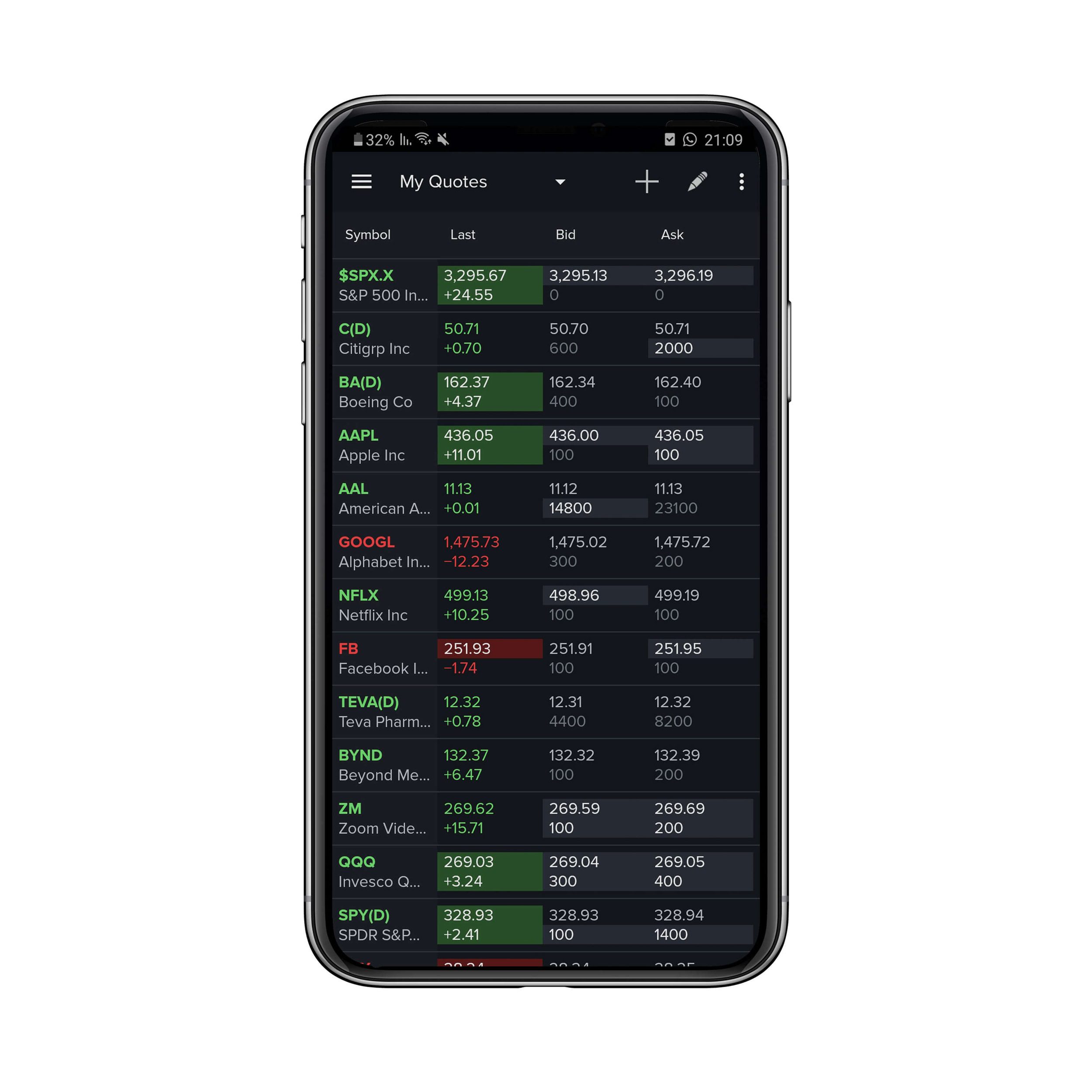

Finance
What Does Yolo Mean In Stocks
Published: January 18, 2024
Discover the meaning of "YOLO" in the world of stocks and how it relates to finance. Uncover the risks and rewards associated with this popular investment strategy.
(Many of the links in this article redirect to a specific reviewed product. Your purchase of these products through affiliate links helps to generate commission for LiveWell, at no extra cost. Learn more)
Table of Contents
Introduction
When it comes to investing in the stock market, there are a plethora of approaches and strategies that traders employ. One such strategy that has gained popularity in recent years is the “YOLO” approach. YOLO, an acronym for “You Only Live Once,” has become a buzzword among investors, particularly in the realm of stock trading.
The YOLO approach to investing is characterized by a willingness to take on high-risk trades in pursuit of significant gains. It is often associated with short-term trading, where traders make quick buying and selling decisions based on market volatility and speculative opportunities.
While the YOLO approach may sound exciting and enticing, it’s important to understand the implications and risks involved. This article aims to explore the concept of YOLO in stocks, its origin, significance, as well as the risks and strategies associated with it.
Disclaimer: The YOLO approach may not be suitable for all investors and should be approached with caution. It is crucial to do thorough research, seek professional advice, and consider your financial goals and risk tolerance before implementing any investment strategy.
Definition of YOLO in Stocks
YOLO in stocks refers to a trading approach characterized by taking high-risk and speculative positions in the stock market. It is based on the belief that investing in volatile stocks or making aggressive trades can lead to substantial gains in a short period.
The term “YOLO” originated from popular culture and was initially used to convey a carefree and impulsive attitude towards life. When applied to the world of investing, YOLO reflects the idea of taking bold, high-stakes investment actions without excessive concern for potential losses.
YOLO traders often engage in quick and frequent buying and selling of stocks, aiming to capitalize on short-term market movements and volatility. This approach may involve investing a significant portion of their portfolio in a single trade, seeking substantial returns within a short time frame.
It’s important to note that the YOLO approach contrasts with more conservative long-term investment strategies, where investors typically prioritize stability, diversification, and a focus on fundamentals. YOLO traders, on the other hand, are willing to take on higher levels of risk and forgo extensive research, relying on instinct, market trends, and speculative opportunities instead.
While the YOLO mindset may offer the potential for quick gains, it should be noted that it also exposes traders to significant risks. The success of YOLO trading hinges on accurately predicting market movements and timing trades effectively. Consequently, YOLO investors should be prepared for potential losses and the possibility of substantial downswings in their portfolio.
It is crucial to differentiate YOLO trading from gambling. While both may involve high levels of risk and speculation, YOLO traders generally base their decisions on market analysis, technical indicators, and other trading strategies. However, it is essential not to underestimate the role of chance and unpredictability in stock market movements.
As with any investment approach, YOLO trading requires careful consideration of personal financial goals, risk tolerance, and investment knowledge. Novice traders are generally advised to approach YOLO trading with caution and gradually increase their exposure as they gain more experience and knowledge of the market.
Origin of YOLO in Stocks
The origin of YOLO in stocks can be traced back to the rise of social media and online communities discussing stock trading and investment strategies. The term “YOLO” gained popularity as an acronym for “You Only Live Once” and was initially used to express a carefree and impulsive attitude towards life. However, it soon found its way into the lexicon of stock traders, becoming synonymous with a high-risk trading approach.
The adoption of YOLO in the stock market can be attributed to the emergence of online trading platforms and the democratization of investing. As more individuals gained access to markets and trading tools, the idea of taking bold, riskier investment actions began to take hold.
Social media platforms, particularly Reddit and Twitter, played a significant role in the dissemination and popularization of YOLO trading strategies. Online communities and forums became hotbeds of discussion, where traders shared their experiences, investment ideas, and stories of notable wins and losses. Within these communities, the concept of YOLO trading thrived and gained a strong following.
The WallStreetBets subreddit is one of the most notable communities where YOLO trading became prominent. Members of this group openly shared their risky investment moves, aiming for significant gains in a short period. The popularity of WallStreetBets skyrocketed during the GameStop trading frenzy in early 2021 when retail investors rallied together to challenge hedge funds and sparked a massive short squeeze.
The GameStop saga showcased the power of collective retail investor action and exemplified the YOLO spirit. Individual traders were willing to take on substantial risks, investing heavily in a highly shorted stock, with the hope of generating significant profits. While not all trades were successful, the event elevated the YOLO approach to the forefront of public awareness and further catalyzed its adoption among retail investors.
It’s worth noting that the YOLO mentality is not unique to the stock market. The concept of taking high-stakes risks in pursuit of rewards can be observed in various aspects of life, including entrepreneurship, adventure sports, and entertainment. However, in the context of stocks, YOLO trading has become a widely recognized term, often associated with speculative and high-risk investment actions.
While the origin of YOLO in stocks may be traced back to social media and online communities, it has permeated broader investing discourse and continues to shape the behavior of individual traders. It serves as a reminder that the stock market can be a dynamic and unpredictable environment, inviting both opportunities and risks for those willing to take the plunge.
Significance of YOLO in Stocks
The YOLO approach in stocks carries significant significance for traders and investors, albeit with both positive and negative implications. Understanding the significance of YOLO in stocks can provide insights into the motivations behind this trading strategy.
1. Potential for High Returns: The primary allure of YOLO trading is the potential for substantial gains within a short period. By taking higher risks and speculative positions, traders hope to capitalize on market volatility and ride the wave of rapid stock price movements. This can be especially appealing to those seeking quick profits or aiming to achieve financial goals in a shorter timeframe.
2. Flexibility and Adaptability: YOLO trading is often associated with a flexible and adaptable approach to the market. YOLO traders are quick to react to changing market conditions, adjusting their positions accordingly. This ability to pivot swiftly can enable them to take advantage of emerging opportunities or cut losses before they escalate, potentially mitigating risks.
3. Amplified Market Presence: The YOLO approach has garnered attention and popularity, particularly through social media platforms. Retail traders who employ the YOLO strategy often share their trades and experiences on online forums, attracting followers and gaining visibility. In some cases, YOLO traders have even managed to influence market sentiment and drive significant stock price movements.
4. Learning Opportunities: YOLO trading can serve as a valuable learning experience for traders, especially those starting their investment journey. By actively participating in high-risk trades and monitoring the outcomes, traders can gain insights into market dynamics, develop a better understanding of risk management, and refine their trading strategies over time.
Despite its significance, it’s important to approach YOLO trading with caution and consideration of its potential drawbacks and risks. Not all YOLO trades result in success, and the pursuit of high returns through risky investments exposes traders to the following challenges:
1. Increased Risk: YOLO trading inherently involves higher levels of risk compared to more conservative trading strategies. The potential for significant gains is often accompanied by a higher likelihood of substantial losses. Traders must be prepared for the possibility of rapid and adverse market movements that can erode their investment capital.
2. Emotional Rollercoaster: The heightened volatility and unpredictability of YOLO trading can induce emotional stress and psychological pressure. Traders may experience moments of intense excitement during winning trades, but also endure periods of fear, frustration, and regret when facing losses. Maintaining emotional discipline and sound decision-making under such circumstances is crucial.
3. Lack of Fundamental Analysis: YOLO trading generally veers away from extensive fundamental analysis and focuses more on short-term market trends and speculative opportunities. This approach may overlook the importance of assessing a company’s financial health, competitive positioning, and long-term growth prospects. Relying solely on short-term price movements can increase the likelihood of uninformed investment decisions.
4. Potential for Chasing Hype: YOLO trading is susceptible to the influence of market hype and social media buzz. Following trends and hot stocks without careful evaluation can lead to herd behavior and the risk of buying into overvalued stocks or speculative bubbles. Traders need to exercise discernment and maintain a balanced perspective when considering investment opportunities.
Despite these challenges, the significance of YOLO in stocks cannot be ignored. It represents a trading approach that appeals to certain traders seeking high-risk, high-reward opportunities. However, it is essential to balance the excitement and allure of YOLO trading with a realistic assessment of the associated risks and challenges.
Risks and Drawbacks of YOLO Investing
While YOLO investing can be enticing for those seeking quick profits and high-risk trading, it is essential to recognize and understand the risks and drawbacks associated with this approach. YOLO investing carries several inherent challenges that traders should consider before adopting this strategy:
1. High Risk: YOLO investing involves taking on significantly higher levels of risk compared to more conservative investment strategies. The focus on short-term market movements and speculative opportunities can result in substantial losses if trades do not go as expected. Traders must be prepared for the possibility of significant swings in their portfolio value and the potential loss of a substantial portion of their investment capital.
2. Lack of Diversification: YOLO investing often involves concentrating a significant portion of an individual’s portfolio in a single trade or a few select positions. This lack of diversification leaves traders highly exposed to the performance of those specific stocks, sectors, or market conditions. If the trade or trades do not pan out as anticipated, investors may face significant losses without the benefit of a diversified portfolio to help mitigate risk.
3. Emotional Decision-Making: The YOLO mindset can lead to emotional decision-making, driven by the desire for quick gains and fear of missing out on opportunities. FOMO (Fear of Missing Out) can tempt traders to make impulsive and ill-informed investment decisions. Emotionally-driven decisions can cloud judgment, undermine rational analysis, and result in poor trade execution.
4. Lack of Fundamental Analysis: YOLO investing often focuses on short-term market trends and momentum, neglecting comprehensive fundamental analysis of stocks. Relying solely on price movements and speculative opportunities may lead to investing in companies with weak financials, questionable management, or uncertain long-term prospects. This lack of fundamental analysis increases the risk of investing in overvalued or fundamentally unsound stocks.
5. Market Volatility: YOLO trades tend to thrive in volatile market conditions. However, increased volatility can lead to heightened risk and unpredictability. Sudden market swings, news events, or changes in investor sentiment can have a significant impact on the performance of YOLO positions. Traders must be prepared for rapid and potentially adverse market fluctuations that could result in substantial losses.
6. Limited Margin for Error: YOLO investing leaves minimal room for error. Given the high-risk nature of these trades, even small miscalculations or adverse market movements can have a disproportionate impact on the overall portfolio. This limited margin for error means that YOLO traders must maintain a high level of accuracy and precision in their decision-making to ensure positive results.
While some traders have achieved notable success with YOLO investing, it is essential to recognize the significant risks and drawbacks involved. YOLO investing is not suitable for all investors and requires a thorough understanding of personal risk tolerance, financial goals, and the ability to devote time and effort to continuous monitoring and evaluation of trades.
Traders considering YOLO investing should mitigate risks by adopting risk management strategies such as setting stop-loss orders, diversifying their portfolios, and allocating only a portion of their capital to high-risk trades. Seeking the guidance of experienced professionals and continually educating oneself about markets and trading techniques can also help minimize risks in YOLO investing.
Ultimately, successful YOLO investing requires a combination of prudent risk management, careful analysis, and a disciplined approach to capital allocation. Traders should carefully weigh the potential rewards against the inherent risks and drawbacks before embarking on a YOLO investment strategy.
Strategies and Tips for YOLO Investors
For those intrigued by the YOLO investing approach and willing to embrace its high-risk nature, implementing specific strategies and following key tips can help increase the chances of success. While there are no guarantees in the market, the following strategies may assist YOLO investors in navigating this risky terrain:
1. Conduct Basic Research: Despite the speculative nature of YOLO investing, it’s still crucial to perform some level of research before making investment decisions. Stay informed about market trends, news, and events that may impact the stocks you’re interested in trading. Basic research ensures that you have a fundamental understanding of the companies you’re investing in and can help you make more informed decisions.
2. Utilize Technical Analysis: YOLO investing often involves capitalizing on short-term price movements. Familiarize yourself with basic technical analysis techniques, such as chart patterns, trend lines, and support and resistance levels. These tools can help you identify potential entry and exit points, improving the timing of your trades.
3. Set Stop-Loss Orders: In high-risk trading, it’s crucial to implement risk management measures. Set stop-loss orders to protect your investment capital from significant losses. Determine the maximum amount of loss you’re willing to tolerate in a trade and place a stop-loss order at that level. This discipline helps minimize losses and prevent trades from becoming excessively risky.
4. Practice Position Sizing: YOLO investing often involves concentrating a significant portion of your capital in a single trade. Implement position sizing techniques to effectively manage risk. Determine the appropriate position size based on your risk tolerance and the potential reward-to-risk ratio of the trade. This strategy helps control risk exposure and prevents one unfavorable trade from significantly impacting your overall portfolio.
5. Maintain Discipline and Emotional Control: YOLO trading can be emotionally intense, with exhilarating highs and gut-wrenching lows. It’s essential to maintain discipline and emotional control to make rational decisions based on analysis and strategy rather than being driven by fear or greed. Stick to your predefined trading plan and avoid impulsive actions driven by emotion.
6. Learn from Mistakes: YOLO investing can be a learning process. Embrace the fact that not all trades will be successful, and losses may occur. Treat losses as opportunities for growth and attribute them to valuable lessons. Analyze your trades, understand what went wrong, and adjust your approach accordingly. Continual learning and improvement are key in refining your YOLO trading strategies.
7. Stay Connected with Market Sentiment: Stay active within online communities and forums focused on trading and investing. Engage in discussions and share insights with fellow YOLO traders. This involvement can provide you with real-time feedback, new perspectives, and insights into current market sentiment.
8. Stay Informed and Adapt: YOLO investing requires staying on top of market developments. Stay informed about changing market conditions, news events, and potential catalysts that may impact your trades. Be prepared to adapt your strategies and positions based on new information.
9. Consider Building a Knowledge Base: Increasing your knowledge and understanding of trading techniques, market dynamics, and risk management strategies can significantly benefit your YOLO investing approach. Continuously educate yourself through books, online courses, and reputable financial news sources to enhance your trading skills.
10. Know Your Limits: YOLO investing is not suitable for all individuals or all investment portfolios. Assess your risk tolerance and only allocate a portion of your capital that you are comfortable with potentially losing. Remember that preserving capital is just as important as generating profits.
Remember, YOLO investing is a high-risk strategy that requires careful consideration and risk management. Implementing these strategies and tips can help navigate the choppy waters of YOLO trading, but it’s essential to remain vigilant and adaptable in this dynamic investment approach.
Examples of Successful YOLO Trades
While YOLO investing carries inherent risks and may not always result in success, there have been notable examples of traders achieving significant gains through this high-risk approach. Although these examples should not be taken as endorsements or guarantees of future success, they provide insights into the potential outcomes of YOLO trades. Here are a few notable examples:
1. GameStop (GME): In early 2021, GameStop became the talk of the financial world as retail investors, predominantly on Reddit’s WallStreetBets forum, coordinated a massive short squeeze. Many individual investors bought shares of GameStop, a struggling brick-and-mortar video game retailer, driving its stock price to astronomical levels. Those who entered the trade early and timed their exit well realized enormous profits, while latecomers experienced significant losses. The GameStop saga serves as a classic example of the power of collective action and the potential rewards of well-timed YOLO trades.
2. Tesla (TSLA): Tesla, the electric vehicle company led by Elon Musk, has been a popular choice among YOLO traders. In recent years, the stock’s volatility and upward trajectory have created numerous opportunities for significant gains. Traders who correctly timed their entry and exit points during Tesla’s impressive price run-ups were able to realize substantial profits. However, it is worth noting that trading Tesla still carries significant risk due to its volatile nature.
3. Moderna (MRNA): Moderna, a biotechnology company specializing in mRNA technology, attracted significant attention during the COVID-19 pandemic. Traders who recognized the potential of Moderna’s development of a COVID-19 vaccine and made well-timed YOLO trades were able to generate substantial profits. However, it’s important to remember that investing in biotech stocks can be highly speculative and subject to regulatory uncertainties and clinical trial results.
These examples illustrate that successful YOLO trades often involve identifying unique opportunities, such as market disruptions, emerging trends, or highly volatile stocks. However, it is crucial to recognize that these examples represent a small percentage of overall trading outcomes and should not be seen as the norm.
It’s important to approach YOLO trades with caution, conduct thorough research, and assess the risks involved. Furthermore, relying solely on past successes or others’ trades does not guarantee future profitable results.
Remember, a successful YOLO trade requires a combination of timing, risk management, and a fair share of luck. It’s crucial to carefully evaluate investment opportunities, be mindful of potential downsides, and align your YOLO trades with your financial goals and risk tolerance.
Conclusion
The YOLO approach to investing in stocks, characterized by high-risk and speculative trading, has gained significant attention in recent years. While it offers the potential for quick and substantial gains, YOLO investing comes with inherent risks and drawbacks that should not be overlooked.
Throughout this article, we’ve explored the definition and origin of YOLO in stocks, its significance, and the risks associated with this approach. We’ve also provided strategies and tips for YOLO investors to navigate the challenges of high-risk trading.
It is crucial to recognize that YOLO investing is not suitable for all individuals or all investment portfolios. YOLO traders should possess a thorough understanding of their risk tolerance, financial goals, and the dynamics of the stock market. Proper risk management techniques, such as position sizing and setting stop-loss orders, can help mitigate potential losses.
While there have been successful YOLO trades in the past, it’s important to approach them with caution and avoid chasing hot trends or blindly following others’ trades. YOLO investing requires continuous learning, adaptability, and emotional discipline.
In conclusion, YOLO investing can offer thrilling opportunities for investors seeking high-risk, high-reward trades. However, it should be approached with a realistic understanding of the potential risks, the need for diligent research, and the importance of active risk management.
Investors considering the YOLO approach should carefully weigh the potential rewards against the inherent risks and make informed decisions based on their individual circumstances. Remember that investing in the stock market always carries some level of risk, and adopting a balanced, diversified approach may be more suitable for long-term success.














